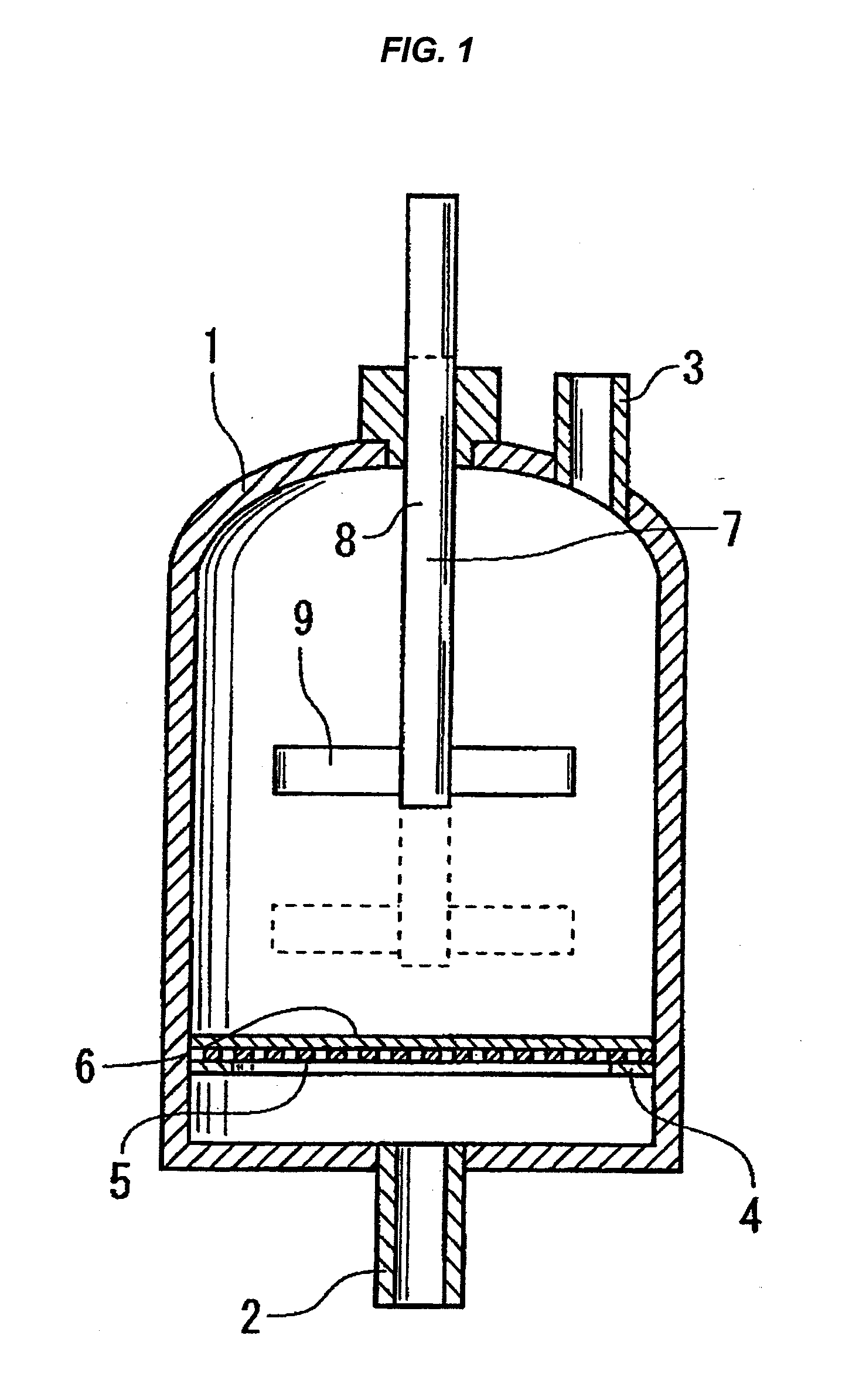Process for producing porous polymer particles
- Summary
- Abstract
- Description
- Claims
- Application Information
AI Technical Summary
Benefits of technology
Problems solved by technology
Method used
Image
Examples
example 1
[0069](Suspension Copolymerization)
[0070]A separable flask having a capacity of 500 mL and equipped with a condenser, stirrer, and nitrogen introduction tube was placed in a thermostatic water bath. Into this flask were introduced 240 g of purified water and 2.4 g of a poly(vinyl alcohol) (manufactured by Kuraray Co., Ltd.; average degree of polymerization, about 2,000; degree of saponification, 79 mol %). The temperature of the thermostatic water bath was kept at 28° C., and the poly(vinyl alcohol) was dissolved in the water with stirring. Subsequently, an aqueous sodium nitrite solution having a concentration of 0.5 mol / L was added to and dissolved in the poly(vinyl alcohol) solution so as to result in a sodium nitrite concentration in the water of 0.005 mg / g.
[0071]Separately from the operation described above, 1 g of dibenzoyl peroxide (containing 25% water) was added to and dissolved in a mixture of 44 g of styrene, 3 g of p-acetoxystyrene, and 7 g of divinylbenzene. Furthermore...
examples 2 to 5
[0081]Suspension copolymerization, filtration, and washing were conducted in the same manners as in Example 1, except that an aqueous sodium nitrite solution having a concentration of 0.5 mol / L was used to regulate the content of sodium nitrite in the water to each of the values shown in Table 1. The yield of the porous polymer particles obtained was determined in the same manner as in Example 1.
PUM
| Property | Measurement | Unit |
|---|---|---|
| Percent by mass | aaaaa | aaaaa |
| Percent by mass | aaaaa | aaaaa |
| Mass | aaaaa | aaaaa |
Abstract
Description
Claims
Application Information
 Login to View More
Login to View More - R&D
- Intellectual Property
- Life Sciences
- Materials
- Tech Scout
- Unparalleled Data Quality
- Higher Quality Content
- 60% Fewer Hallucinations
Browse by: Latest US Patents, China's latest patents, Technical Efficacy Thesaurus, Application Domain, Technology Topic, Popular Technical Reports.
© 2025 PatSnap. All rights reserved.Legal|Privacy policy|Modern Slavery Act Transparency Statement|Sitemap|About US| Contact US: help@patsnap.com

